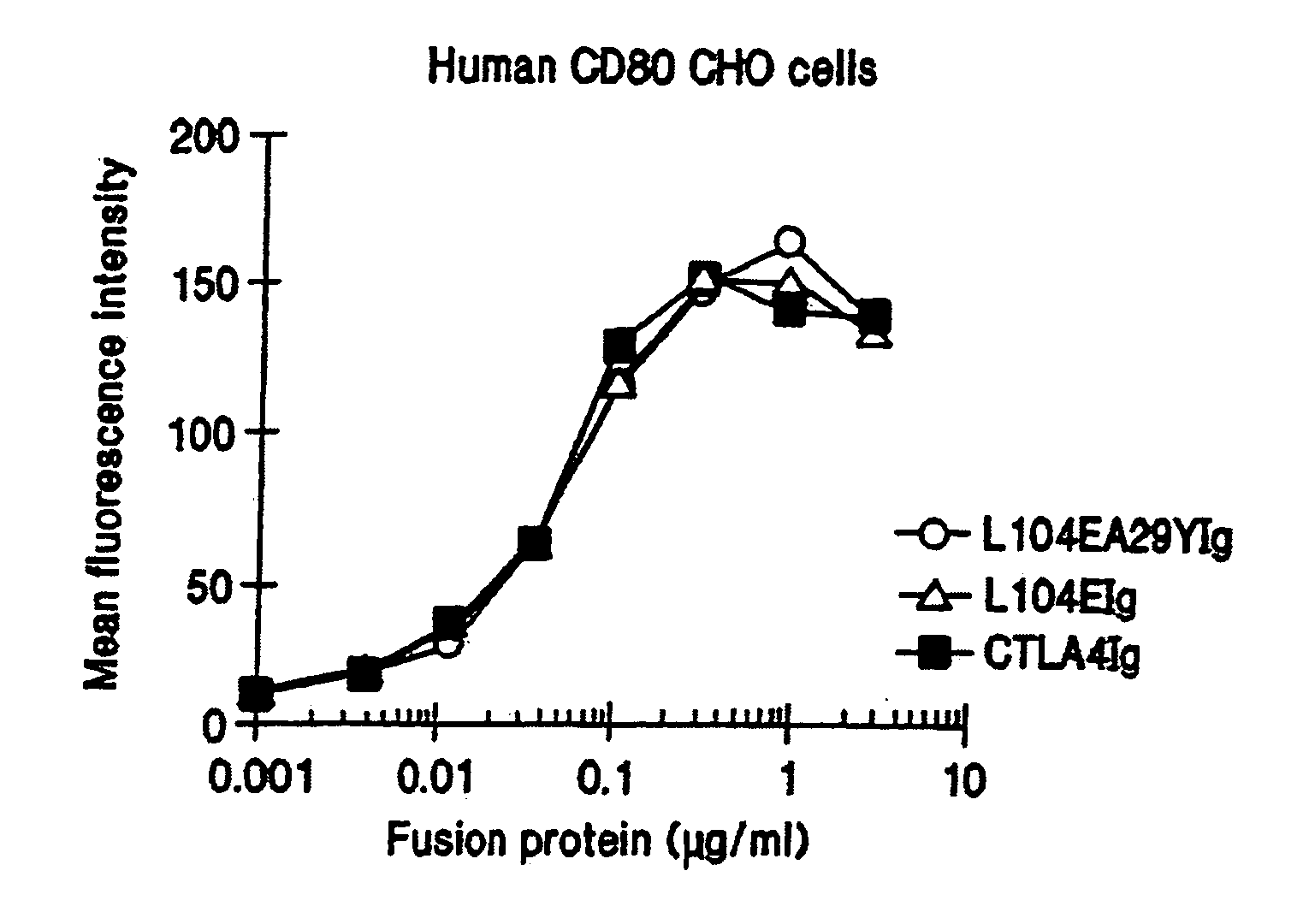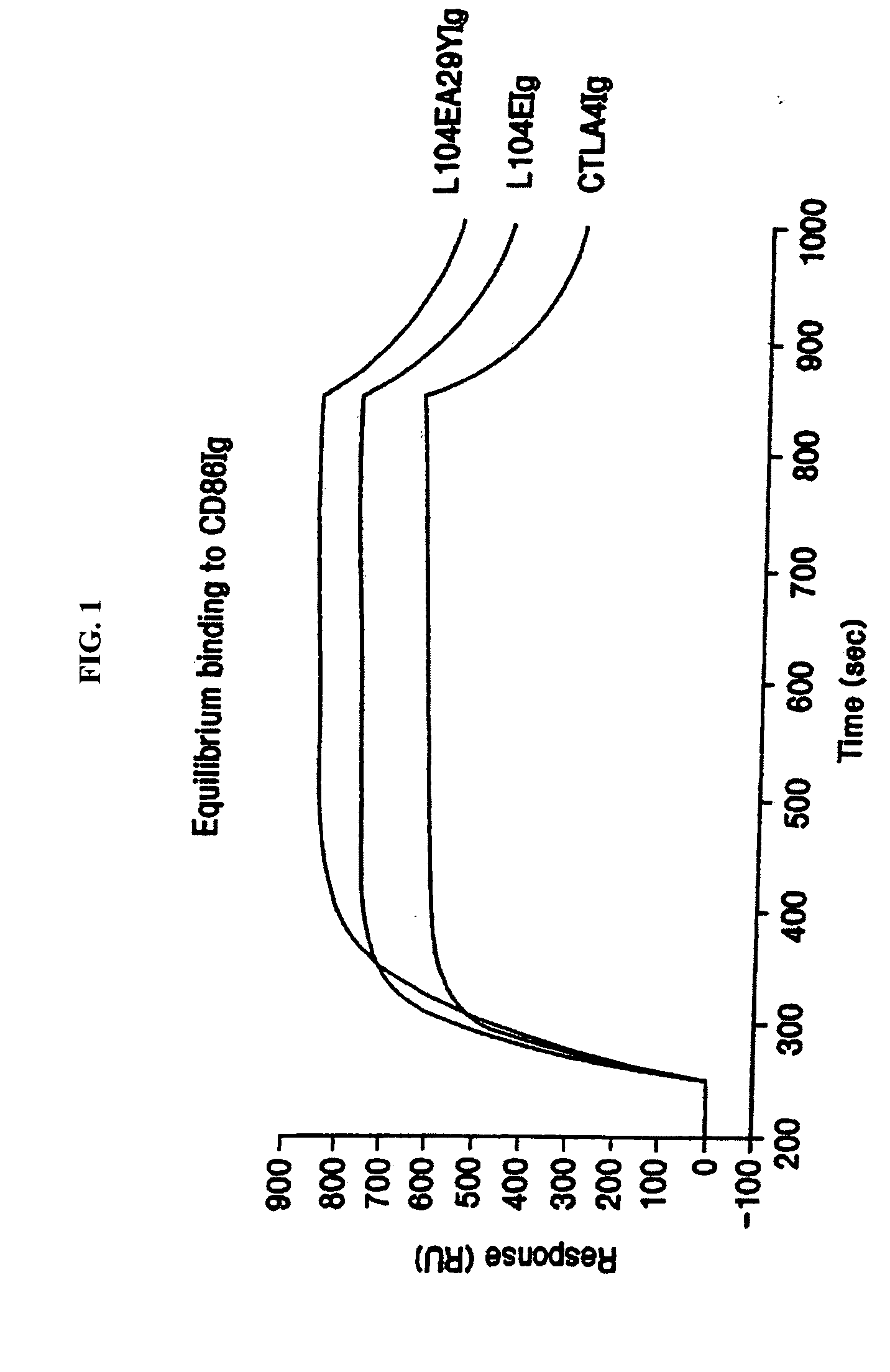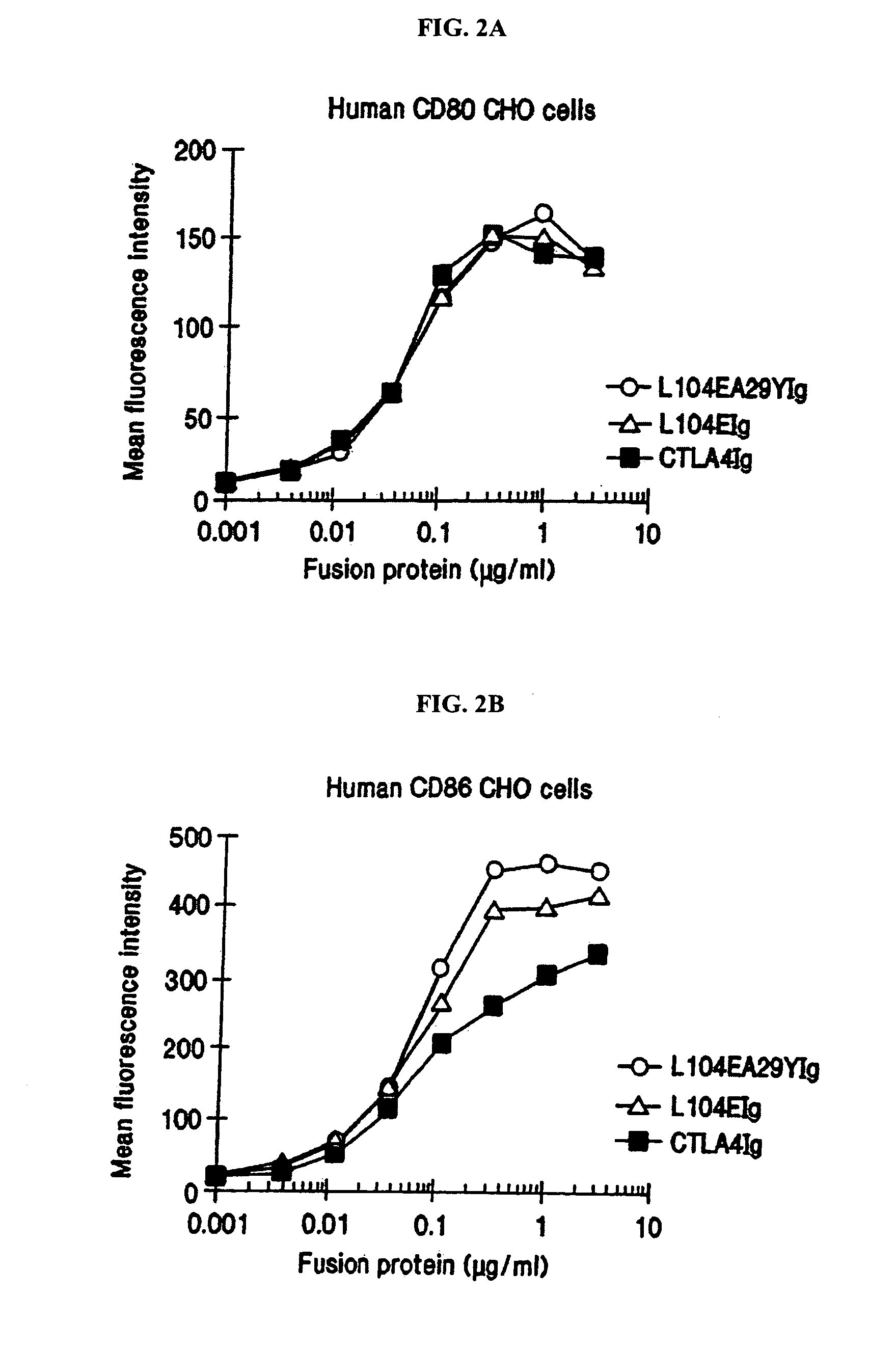Methods for treating immune disorders associated with graft transplantation with soluble CTLA4 mutant molecules
- Summary
- Abstract
- Description
- Claims
- Application Information
AI Technical Summary
Benefits of technology
Problems solved by technology
Method used
Image
Examples
example 1
[0159] This example provides a description of the methods used to generate the nucleotide sequences encoding the soluble CTLA4 mutant molecules of the invention. A single-site mutant L104EIg was generated and tested for binding kinetics for CD80 and / or CD86. The L104EIg nucleotide sequence was used as a template to generate the double-site mutant CTLA4 sequence, L104EA29YIg, which was tested for binding kinetics for CD80 and / or CD86.
CTLA4Ig Codon Based Mutagenesis
[0160] A mutagenesis and screening strategy was developed to identify mutant CTLA4Ig molecules that had slower rates of dissociation (“off” rates) from CD80 and / or CD86 molecules. Single-site mutant nucleotide sequences were generated using CTLA4Ig (U.S. Pat. Nos. 5,844,095; 5,851,795; and 5,885,796; ATCC Accession No. 68629) as a template. Mutagenic oligonucleotide PCR primers were designed for random mutagenesis of a specific cDNA codon by allowing any base at positions 1 and 2 of the codon, but only guanine or thymine...
example 2
[0162] The following provides a description of the screening methods used to identify the single- and double-site mutant CTLA4 polypeptides, expressed from the constructs described in Example 1, that exhibited a higher binding avidity for CD80 and CD86 antigens, compared to non-mutated CTLA4Ig molecules.
[0163] Current in vitro and in vivo studies indicate that CTLA4Ig by itself is unable to completely block the priming of antigen specific activated T cells. In vitro studies with CTLA4Ig and either monoclonal antibody specific for CD80 or CD86 measuring inhibition of T cell proliferation indicate that anti-CD80 monoclonal antibody did not augment CTLA4Ig inhibition. However, anti-CD86 monoclonal antibody did augment the inhibition, indicating that CTLA4Ig was not as effective at blocking CD86 interactions. These data support earlier findings by Linsley et al. (Immunity, (1994), 1:793-801) showing inhibition of CD80-mediated cellular responses required approximately 100 fold lower CT...
example 3
[0197] This study compared the efficacy and safety of L104EA29YIg, described above, as a maintenance immunosuppressant with CsA over 12 months when used as part of a CNI-free combination regimen consisting of basiliximab(Simulect®; Novartis) induction, mycophenolate mofetil (MMF; CellCept®; Roche), and corticosteroids in renal transplant recipients.
[0198] Adult recipients of a non-HLA-identical renal allograft from a living or deceased donor were eligible. Subjects with a prior renal transplant, a history of panel-reactive antibodies of >20%, or those deemed by the investigator to be at higher risk of acute rejection were restricted to ≦10% of the study population. Exclusion criteria included underlying renal disease of focal and segmental glomerulosclerosis, Type I or II membranoproliferative glomerulonephritis, or hemolytic uremic syndrome / thrombotic thrombocytopenic purpura; active hepatitis B or C, or HIV; and donor age >60 or 36 hours.
[0199] This was an open-label, randomized...
PUM
| Property | Measurement | Unit |
|---|---|---|
| Time | aaaaa | aaaaa |
| Concentration | aaaaa | aaaaa |
| Dimensionless property | aaaaa | aaaaa |
Abstract
Description
Claims
Application Information
 Login to View More
Login to View More - R&D
- Intellectual Property
- Life Sciences
- Materials
- Tech Scout
- Unparalleled Data Quality
- Higher Quality Content
- 60% Fewer Hallucinations
Browse by: Latest US Patents, China's latest patents, Technical Efficacy Thesaurus, Application Domain, Technology Topic, Popular Technical Reports.
© 2025 PatSnap. All rights reserved.Legal|Privacy policy|Modern Slavery Act Transparency Statement|Sitemap|About US| Contact US: help@patsnap.com



